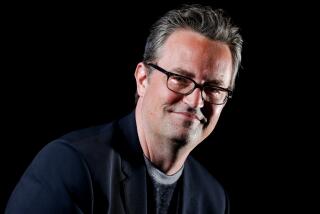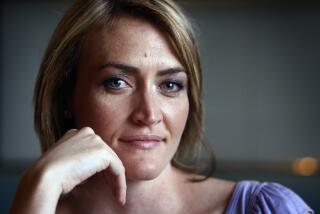
- Share via
William Dale Archerd drank highballs, married frequently and despised 9-to-5 employment. He was Arkansas-born, slender, with pale blue eyes and wavy silver hair. He inspired romantic devotion in women and trust in criminal confederates. For decades, his wives and acquaintances were fatally stricken with sudden, convulsion-inducing illness that coroners did not grasp as murder.
His motive was greed, though he never made much. He was a frail 55 when police finally arrested him at his Alhambra home in 1967. “Well, it took you long enough!” he quipped. A prosecutor called him “the greatest cold-blooded killer since Bluebeard,” and a judge called him the most evil defendant he’d ever seen. There rarely seemed to be a dent in Archerd’s cool. Even on death row, he retained his aura of blithe unconcern.
Archerd was a natural salesman, at various times hawking vitamins, hearing aids and folding doors. The merchandise he sold best was himself. From 1930 to 1965, he married seven women, sometimes not bothering to divorce the previous one.
He learned his special method of murder — which allowed him to get away with it for so long — as a young hospital attendant. At Camarillo State Hospital, he worked off and on at the “insulin shock ward” from 1939 to 1941. It was a 20-bed dorm for the treatment of schizophrenia in the desperate era before antipsychotic drugs.
In this series, Christopher Goffard revisits old crimes in Los Angeles and beyond, from the famous to the forgotten, the consequential to the obscure, diving into archives and the memories of those who were there.
As part of the therapy, now discredited, injections of insulin would plunge a patient into deep coma as the brain was starved of sugar.
A pencil was rubbed along the ball of the patient’s foot. If the toes fanned out in a so-called Babinski response, “he was reverting back to first man, an ape from which we are supposed to have sprung,” as one of Archerd’s former co-workers would testify. This meant death was close. Glucose brought patients awake, sometimes with brain damage misinterpreted as psychological improvement.
Because insulin is a natural hormone and injections are quickly absorbed, an overdose was nearly impossible to pinpoint as a cause of death. For at least six victims across 19 years, police believed, it was Archerd’s choice of poison.
His first suspected murder was in 1947. His friend William Jones Jr., a 34-year-old ex-fireman, was charged with the statutory rape of a babysitter. It promised to ruin the family’s good name. Archerd jumped in to help. The Joneses gave him a few thousand dollars to buy off the babysitter’s family. Archerd handed over $300 and kept the rest. He told Jones how to fake a head injury and avoid court — an insulin injection would mimic the symptoms. Jones convulsed hideously while Archerd stood quietly at his bedside. “Encephalitis,” the coroner said.

Nine years later, he summoned police to the Covina home where he was living with his fourth wife, 48-year-old Zella Winders. He told a ludicrous story: Two robbers had broken into the house and injected her with a mysterious substance. Police noted two puncture marks on her buttocks. He refused to let her go to the hospital, and soon after, she was dead, with two extra puncture marks. “Broncho-pneumonia,” the coroner said.
Two years later, he married his fifth wife, 46-year-old Juanita Plum, in Las Vegas. She was dead within days amid unexplained sweating and convulsions. When her will was read and Archerd learned his take was $1, he dug his fingers into her daughter’s shoulders so hard it nearly buckled her knees. “Accidental barbiturate overdose,” the coroner said.
In 1960, he persuaded a 54-year-old acquaintance, Frank Stewart, to participate in an insurance scam. Insulin would counterfeit the symptoms of a head injury. “Cerebral hemorrhage,” the autopsy said.
The following year, he pressured his 15-year-old nephew, Burney Kirk Archerd, into a similar scheme. They would pretend the boy had been hit by a truck, and an insulin injection would mimic the effects. “Bronchopneumonia and cerebral hemorrhage,” the coroner said.
By this point, Los Angeles County sheriff’s detectives were convinced Archerd was a serial killer and knew how he was doing it. To Harold “Whitey” White, a sheriff’s lieutenant who recounted nearly a decade on the investigation in his memoir “Whitey’s Career Case: The Insulin Murders,” Archerd was “that rotten bastard,” “that slimy bastard” and “that crafty son-of-a-bitch.”
“It’s a hell of a helpless feeling to know that a psychopath like William Dale Archerd can kill so many people, to know how he kills and why, but not to be able to come up with a criminal cause of death in order to prove murder,” White wrote.
Archerd killed his seventh wife, 60-year-old Mary Brinker Post, in November 1966. A novelist, she had written the bestselling “Annie Jordan,” about a plucky heroine in boom town Seattle modeled on her pioneer family. She suffered hideous convulsions and died at Pomona Valley Hospital. “Hypoglycemic shock due to undetermined,” the autopsy said.
The Sheriff’s Department put White on the investigation full time. His team set out to prove a circumstantial case that the killings were united by a common scheme and plan. “I decided Archerd’s crime spree had gone on long enough. I was going to nail him if it took the rest of my career to do it,” White wrote.
He enlisted doctors — including leading insulin researchers — to reexamine the medical files in the six known deaths. All the deaths, the doctors concluded, were attributable to insulin overdose. Brain slides of some victims showed massive damage that could only have been caused by insulin-induced glucose starvation.

When White showed up at Archerd’s house to arrest him, he found the killer painfully thin, frail and “miserable looking.” Nevertheless, White had to resist the urge to punch “the evil son-of-a-bitch right in the mouth.”
Archerd went on trial for the three L.A. County deaths — wives No. 4 and No. 7 and his nephew — while prosecutors used the other three to establish his decades-long pattern.
The star witness was Archerd’s third wife, a former nurse named Dorothea Sheehan, who was infuriated when he annulled their marriage to wed another woman the next day. She was “one pissed-off ex-wife,” White wrote, “and she wanted blood!”
On the stand, she recalled musing with Archerd about how murder-by-insulin would make an excellent plot for a mystery story. How he had asked her to buy him a vial of insulin and to inject Jones for the insurance scam. How he said that because Jones raped more than one babysitter, “it was just as well he had died.” And how, when she read about Zella Winders’ death in the newspaper, she confronted him.
“I said smartly, ‘It wouldn’t have been insulin, would it?’ And he sort of kicked me in the ankle and looked around as if he thought my house might have been bugged.”

As she recounts in her book “Assassins… Serial Killers… Corrupt Cops…,” Mary Neiswender got to know him while covering his trial for the Long Beach Press-Telegram. He told her stories designed to elicit pity — that he dug ditches as a boy and needed 43 operations for malformed limbs. She decided he was a pathological liar.
“His guards would tell me later: ‘Y’know, he expected to beat this and was counting on you for his next wife,’” she wrote. “I wasn’t flattered.”
During the two-month trial, Archerd was unfailingly relaxed, friendly and respectful to his attorneys. Unlike most defendants in his position, he did not second-guess any of his lawyers’ decisions. “I can’t recall a single time he evinced any stress,” Ira Reiner, an attorney who represented Archerd, recently told The Times. “Not a thing bothered him.”
He chose to have his case heard by a judge, rather than a jury, thinking he was less likely to get the death penalty. Judge Adolph Alexander found him guilty — making him the first convicted insulin murderer in the United States — and sent him to death row.
“He figured he had the perfect scheme,” said Reiner, 88, who later became the L.A. County district attorney. “Had there been one case charged and only one, there’s certainly a reasonable possibility that a judge or jury would have acquitted. The problem was one after another.”

If you have information on old crimes, famous, once-famous or obscure, contact [email protected]
When Archerd’s death warrant was signed, Reiner won a last-minute stay. He went to San Quentin to deliver the order in person, rather than risk sending a fax that got there too late. He remembers Archerd’s nonchalance on learning the good news.
“It’s hard to describe how utterly relaxed he was,” Reiner said. Archerd was indignant, however, that prison officials had offered him a last meal of steak or lobster, but not both.
“He said, ‘They’re gonna kill me, and they want to argue with me about whether I can have steak and lobster.’ He said, ’It isn’t fair, it isn’t right.’ Like he was arguing with a waiter.”
Archerd’s death sentence was eventually commuted to life in prison, and he died of natural causes at age 65 in 1977. He was “a charming sociopath,” Reiner said. “You can’t kill that many people and be so relaxed and charming unless there’s a little piece missing there.”

More to Read
Sign up for Essential California
The most important California stories and recommendations in your inbox every morning.
You may occasionally receive promotional content from the Los Angeles Times.












